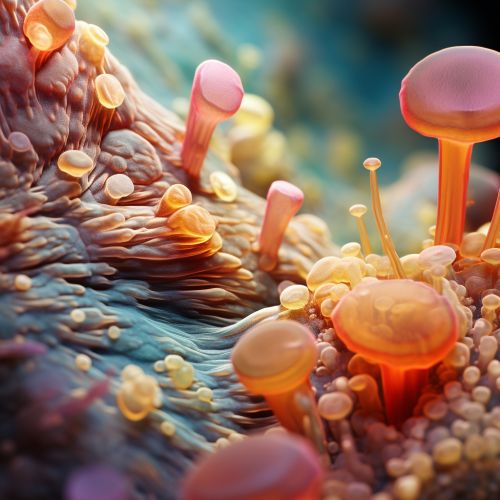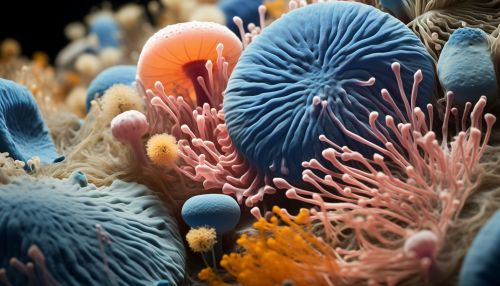Mechanisms of Microbial Bioenergy Production
Introduction
Microbial bioenergy production refers to the process of harnessing energy from microbial metabolic activities. This process is a promising alternative to fossil fuels, as it is renewable and environmentally friendly. The mechanisms of microbial bioenergy production are diverse and complex, involving various types of microorganisms and metabolic pathways. This article will delve into the details of these mechanisms, focusing on the roles of different microorganisms, the metabolic pathways involved, and the types of bioenergy produced.


Microorganisms Involved in Bioenergy Production
Microorganisms play a crucial role in bioenergy production. They are responsible for the conversion of organic matter into bioenergy through their metabolic activities. The types of microorganisms involved in this process include bacteria, archaea, and fungi, among others.
Bacteria
Bacteria are the most common microorganisms involved in bioenergy production. They are capable of metabolizing a wide range of organic compounds, including carbohydrates, proteins, and lipids. The metabolic activities of bacteria result in the production of various types of bioenergy, such as biogas, biohydrogen, and bioelectricity. Some examples of bacteria involved in bioenergy production include Clostridium species, E. coli, and Pseudomonas species.
Archaea
Archaea, particularly methanogenic archaea, are also involved in bioenergy production. They are responsible for the production of methane, a major component of biogas, through the process of methanogenesis. Methanogenesis is a type of anaerobic respiration in which carbon dioxide is reduced to methane. Some examples of methanogenic archaea include Methanobacterium species, Methanosarcina species, and Methanococcus species.
Fungi
Fungi, especially yeasts, are involved in the production of bioethanol through the process of fermentation. Fermentation is a metabolic process in which sugars are converted into ethanol and carbon dioxide in the absence of oxygen. Some examples of yeasts involved in bioethanol production include S. cerevisiae and C. shehatae.
Metabolic Pathways Involved in Bioenergy Production
The metabolic pathways involved in microbial bioenergy production are diverse and complex. They include fermentation, anaerobic respiration, and photosynthesis, among others.
Fermentation
Fermentation is a metabolic process in which sugars are converted into ethanol and carbon dioxide in the absence of oxygen. This process is carried out by yeasts and some bacteria, and it results in the production of bioethanol, a type of biofuel. The main steps of fermentation include glycolysis, pyruvate decarboxylation, and ethanol production.
Anaerobic Respiration
Anaerobic respiration is a metabolic process in which organic compounds are oxidized in the absence of oxygen. This process is carried out by bacteria and archaea, and it results in the production of biogas and biohydrogen. The main steps of anaerobic respiration include glycolysis, the Krebs cycle, and electron transport.
Photosynthesis
Photosynthesis is a metabolic process in which light energy is converted into chemical energy in the form of glucose. This process is carried out by cyanobacteria and algae, and it results in the production of biohydrogen and biodiesel. The main steps of photosynthesis include light reactions and the Calvin cycle.
Types of Bioenergy Produced
The types of bioenergy produced by microorganisms include biogas, biohydrogen, bioelectricity, and biofuels such as bioethanol and biodiesel.
Biogas
Biogas is a type of bioenergy produced by the anaerobic digestion or fermentation of organic matter by bacteria and archaea. It is composed mainly of methane and carbon dioxide, and it can be used as a fuel for heating, electricity generation, and transportation.
Biohydrogen
Biohydrogen is a type of bioenergy produced by the metabolic activities of bacteria and algae. It is a clean and renewable energy source, as it produces water when burned and does not contribute to greenhouse gas emissions.
Bioelectricity
Bioelectricity is a type of bioenergy produced by the metabolic activities of electrogenic bacteria. These bacteria are capable of transferring electrons to an electrode, generating an electric current.
Biofuels
Biofuels, such as bioethanol and biodiesel, are types of bioenergy produced by the fermentation of sugars by yeasts and the photosynthesis of algae, respectively. They are renewable and environmentally friendly alternatives to fossil fuels.
Conclusion
Microbial bioenergy production is a complex and diverse process involving various types of microorganisms and metabolic pathways. The types of bioenergy produced by microorganisms, including biogas, biohydrogen, bioelectricity, and biofuels, are promising alternatives to fossil fuels. They are renewable, environmentally friendly, and have the potential to contribute significantly to global energy supply.
